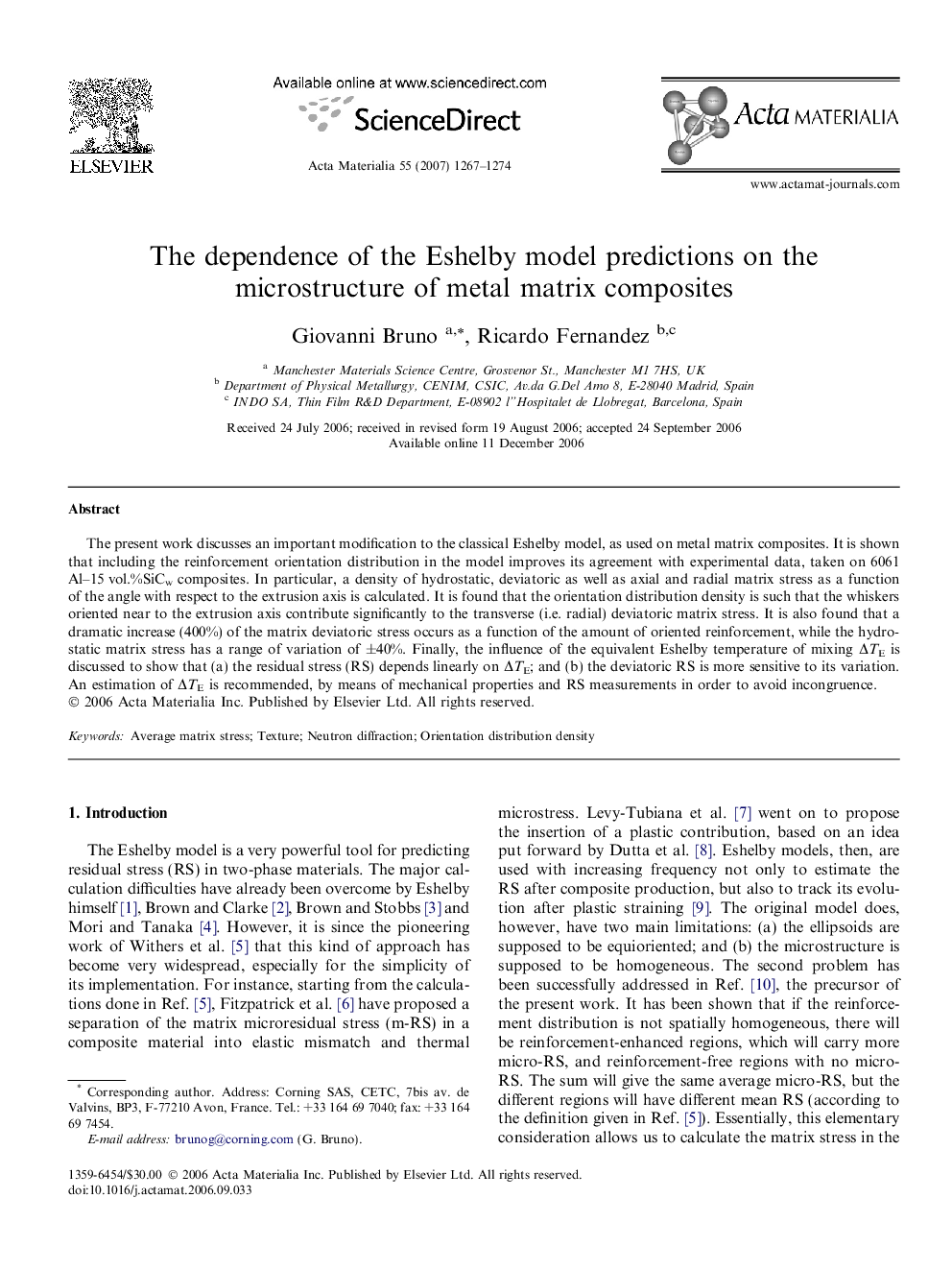| Article ID | Journal | Published Year | Pages | File Type |
|---|---|---|---|---|
| 1449860 | Acta Materialia | 2007 | 8 Pages |
The present work discusses an important modification to the classical Eshelby model, as used on metal matrix composites. It is shown that including the reinforcement orientation distribution in the model improves its agreement with experimental data, taken on 6061Al–15 vol.%SiCw composites. In particular, a density of hydrostatic, deviatoric as well as axial and radial matrix stress as a function of the angle with respect to the extrusion axis is calculated. It is found that the orientation distribution density is such that the whiskers oriented near to the extrusion axis contribute significantly to the transverse (i.e. radial) deviatoric matrix stress. It is also found that a dramatic increase (400%) of the matrix deviatoric stress occurs as a function of the amount of oriented reinforcement, while the hydrostatic matrix stress has a range of variation of ±40%. Finally, the influence of the equivalent Eshelby temperature of mixing ΔTE is discussed to show that (a) the residual stress (RS) depends linearly on ΔTE; and (b) the deviatoric RS is more sensitive to its variation. An estimation of ΔTE is recommended, by means of mechanical properties and RS measurements in order to avoid incongruence.
